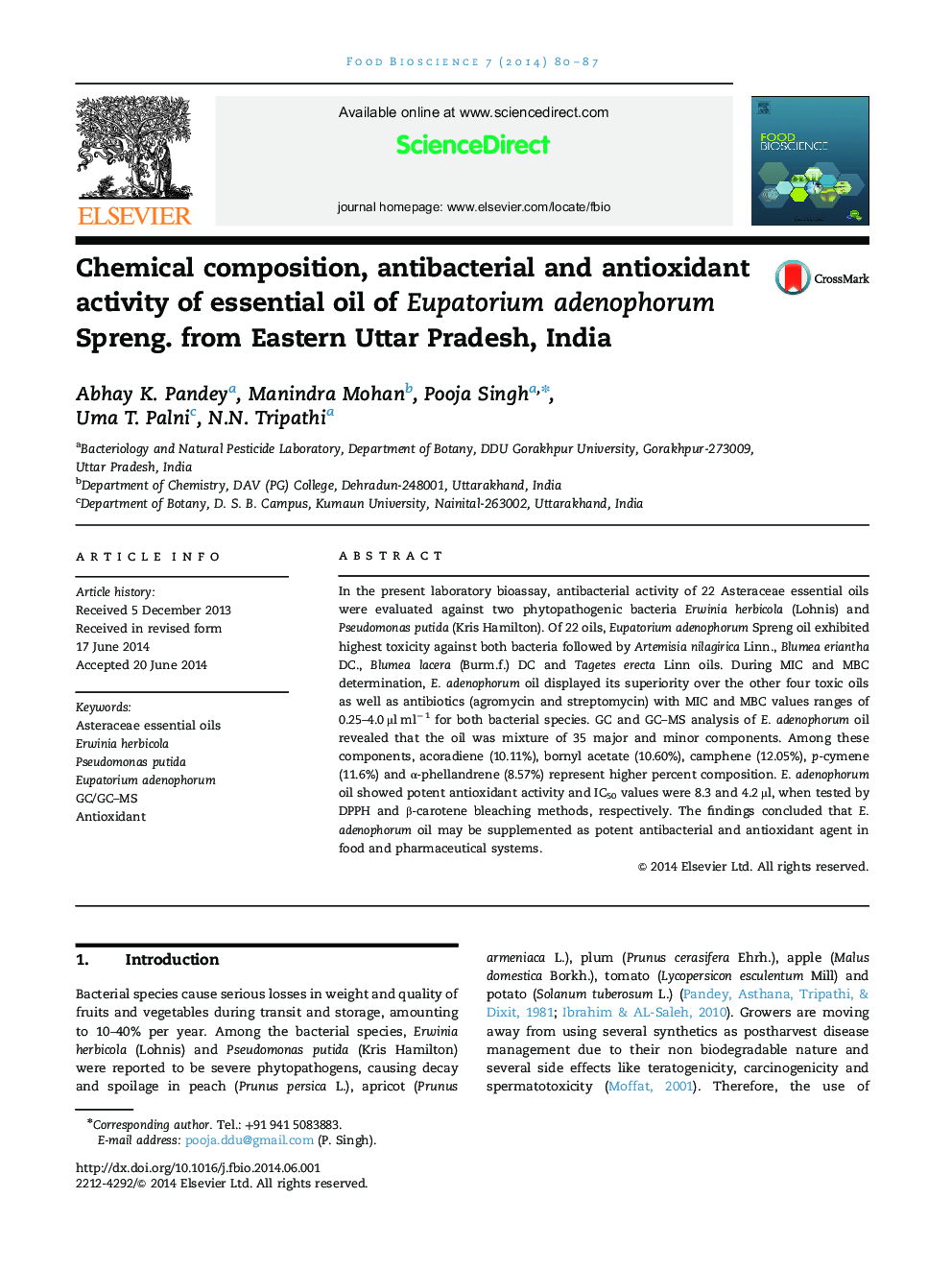| Article ID | Journal | Published Year | Pages | File Type |
|---|---|---|---|---|
| 19749 | Food Bioscience | 2014 | 8 Pages |
In the present laboratory bioassay, antibacterial activity of 22 Asteraceae essential oils were evaluated against two phytopathogenic bacteria Erwinia herbicola (Lohnis) and Pseudomonas putida (Kris Hamilton). Of 22 oils, Eupatorium adenophorum Spreng oil exhibited highest toxicity against both bacteria followed by Artemisia nilagirica Linn., Blumea eriantha DC., Blumea lacera (Burm.f.) DC and Tagetes erecta Linn oils. During MIC and MBC determination, E. adenophorum oil displayed its superiority over the other four toxic oils as well as antibiotics (agromycin and streptomycin) with MIC and MBC values ranges of 0.25–4.0 µl ml−1 for both bacterial species. GC and GC–MS analysis of E. adenophorum oil revealed that the oil was mixture of 35 major and minor components. Among these components, acoradiene (10.11%), bornyl acetate (10.60%), camphene (12.05%), p-cymene (11.6%) and α-phellandrene (8.57%) represent higher percent composition. E. adenophorum oil showed potent antioxidant activity and IC50 values were 8.3 and 4.2 µl, when tested by DPPH and β-carotene bleaching methods, respectively. The findings concluded that E. adenophorum oil may be supplemented as potent antibacterial and antioxidant agent in food and pharmaceutical systems.
